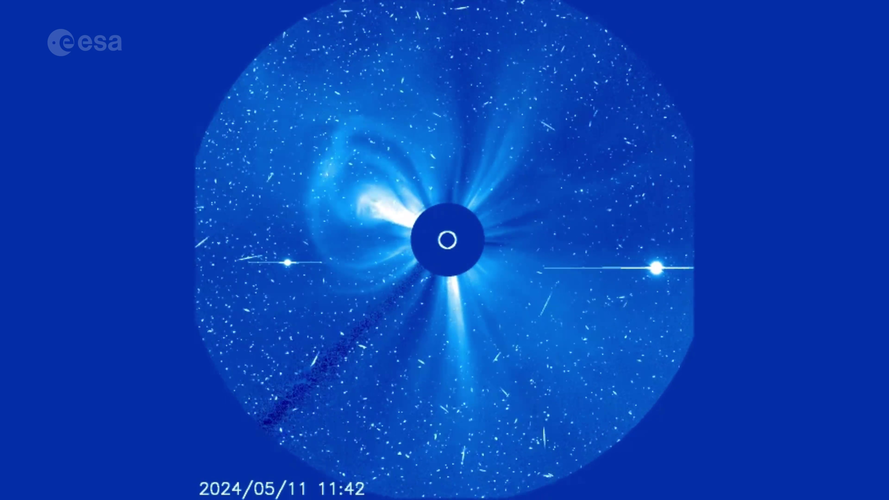Over the weekend of 10–12 May 2024, Earth was struck by the largest solar storm in more than a decade. While many of us enjoyed colourful auroras lighting up Earth’s protective atmosphere, spacecraft had to endure being buffeted by incredibly strong solar winds and electromagnetic radiation.
Positioned between the Sun and Earth, the ESA/NASA Solar and Heliospheric Observatory (SOHO) caught the entire solar outburst on camera. The Sun can be seen spewing out clouds of particles, with an extremely large burst sent to Earth on 11 May. The bright spots on the left and right are Jupiter and Venus.
This video was taken by SOHO’s LASCO instrument, a coronagraph made up of a telescope with a disc blocking the centre of view. By blocking out the direct light coming from the Sun, the instrument can see light from the surrounding corona.
SOHO is not the only ESA spacecraft studying solar activity and space weather. ESA’s Directorates of Science, Human and Robotic Exploration, Earth Observation, Operations, and Technology, Engineering and Quality all have missions and/or other activities directly connected with this topic. Together, they form the ESA Heliophysics observatory or more musically, ESA’s Heliophysics Orchestra.



 Video:
00:00:29
Video:
00:00:29